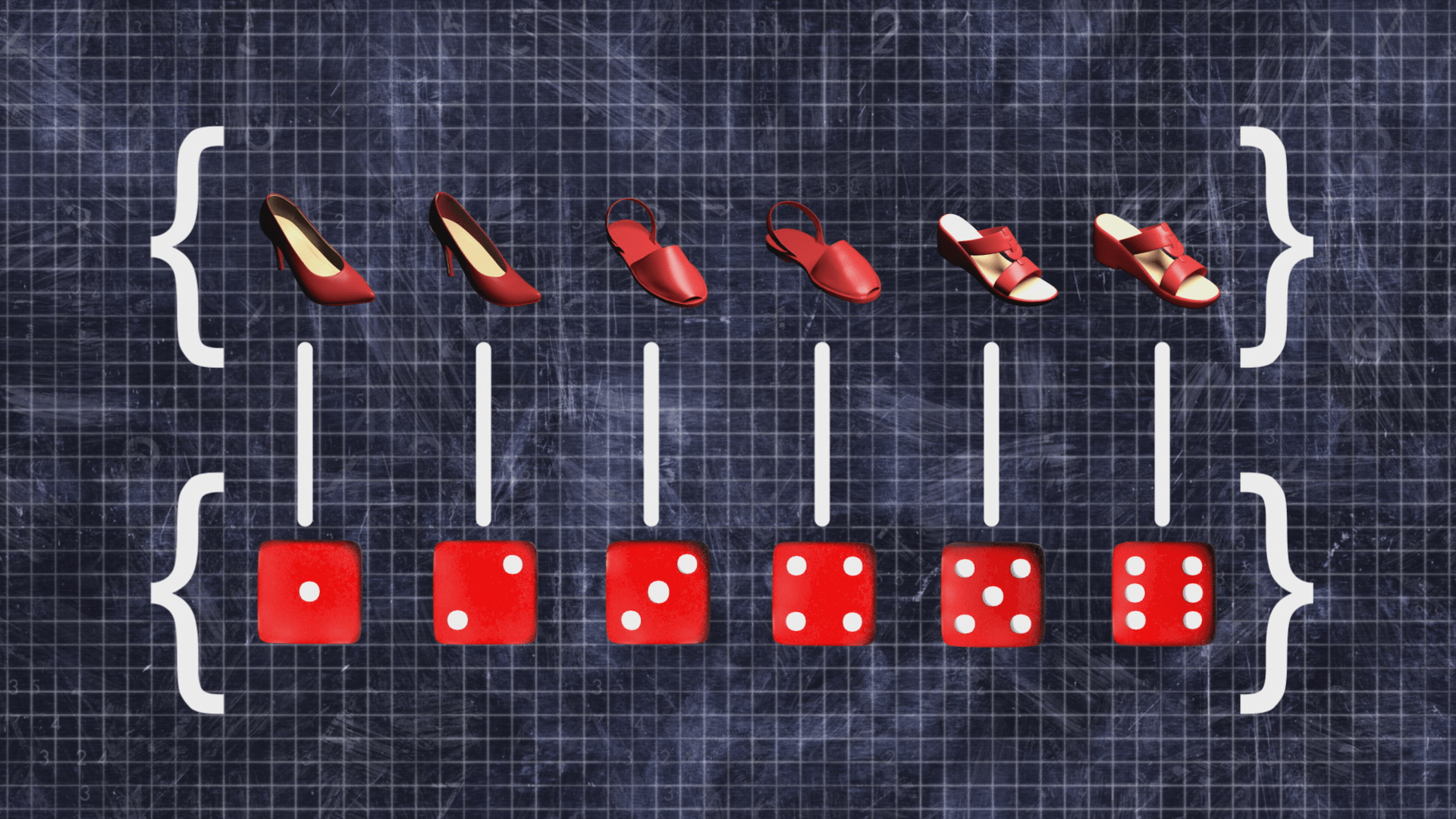4 mind-bending math experiments that explain infinity
Can one infinity be bigger than another?

A set of the six sides of a die matches up one-to-one with a set of red shoes, helping illustrate Georg Cantor's set theorem. Image courtesy of GBH/NOVA
It can be easy to take math for granted. But the field has evolved over millennia, and concepts that seem obvious today had to be invented. Although zero is the beginning of counting, it arrived late to the math party. But not as late as its counterpart, infinity. Four thought experiments featured in NOVA’s “Zero to Infinity” illustrate how people used the world around them to explore these revolutionary concepts.
How infinity can help determine the area of a pizza (without pi)
Pizza is an interesting dish–a circle cut into triangles and served in a square box—an elusive mystery of early mathematics. Not the serving of the pizza, but the circle itself. See, squares and rectangles have straight lines, so it’s easy to determine their area. A circle, on the other hand, left ancient scholars scratching their heads. One solution: infinity.
Hilbert’s Hotel: Is there room for one more at a hotel with infinite rooms?
Infinity can be a tough concept to grasp. But mathematician David Hilbert came up with a more concrete way to think about it: A hotel with an infinite number of rooms–all occupied. What happens when one more guest shows up? What about an infinite number of guests, all evacuated from another nearby “Hilbert’s hotel” that caught on fire? Is there room for everyone?
Zeno’s Paradox: Infinity turns a speeding arrow into an illusion (25:44 - 30:24)
The Greek philosopher Zeno of Elea came up with a paradox that questioned the very idea of motion. Suppose you shoot an arrow and try to calculate its speed. You need to divide the distance traveled by the amount of time elapsed. But supposing that instead of moving, the arrow is actually at rest for an infinity of instants, then you would be dividing by zero–which is against the rules of mathematics.
Cantor’s Theorem: Some infinities are bigger than others (44:06 - 51:00)
German mathematician Georg Cantor helped us think about how big infinity actually is. He created a concept called “set theory,” in which you have a defined collection, or "set," of things, and if they match up one-to-one with another set of things, then both sets are the same size. But let’s say you take an infinite set of counting numbers (1,2,3…) and match it up to an infinite set of even numbers. Which one is bigger? It turns out they are exactly the same size. Here’s why:



